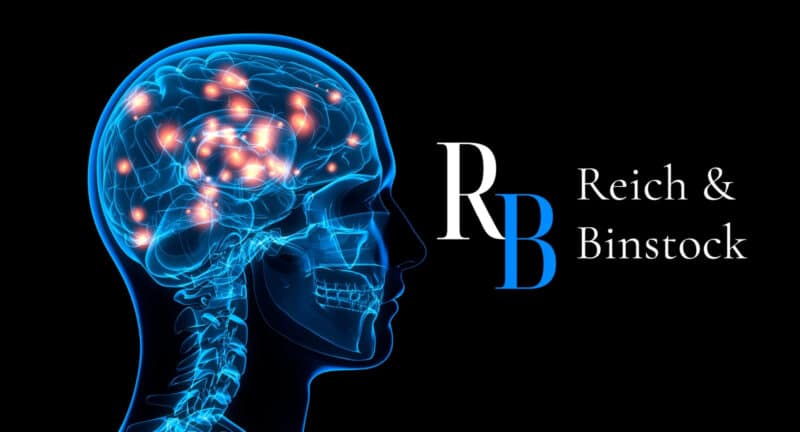HOUSTON CEREBRAL PALSY ATTORNEYS

The moment of birth is a very exciting time for parents. It signals new life, joy, and a new source of happiness. However, the birthing process is very complex and, at times, dangerous for mother and baby. That’s why it’s incredibly important for doctors and other medical professionals to take care throughout the delivery. Any mistakes or medical errors could spell disaster for the mother or the baby. Unfortunately, birth injuries like Cerebral Palsy are more common than one might think, and many people file cerebral palsy lawsuits with the help of experienced cerebral palsy attorneys
Many children who suffered birth injuries also have cerebral palsy. It can develop after complications or mistakes made during labor or delivery. When something goes wrong, the person responsible may not want to notify the parents of the severity of the mistake. In this case, the cerebral palsy attorneys at Reich & Binstock are here to help. Our Houston birth injury lawyers have extensive experience with cases like these, and we can’t wait to represent you. For a free consultation, please call 713-622-7271 today.
Our Cerebral Palsy Lawyers Give Parents Peace of Mind
We understand that, after a diagnosis of cerebral palsy, parents likely have questions about their child’s future. At Reich & Binstock, we can help you find answers. With our experience handling birth injury lawsuits, we understand how medical errors can lead to cerebral palsy cases. We also know how to file a lawsuit on behalf of affected families and litigate their cases in court.
When it comes to your child’s birth injury, never settle for less than the best. Call Reich & Binstock for an experienced birth injury attorney who will always put you and your child’s needs first. We refuse to settle for lowball offers from insurance companies and will fight for full and fair financial compensation for you.
What Is Cerebral Palsy?
According to the National Institutes of Health, cerebral palsy is “a group of neurological disorders that appear in infancy or early childhood and affect body movement and muscle coordination.” It is a term used to describe multiple conditions that can result from complications or medical mistakes during birth.
Children who have cerebral palsy often suffer from increased muscle tone, motor impairments, cognitive impairments, and much more. Different cases range from mild to very severe and impactful. Unfortunately, cerebral palsy is also the most common motor disability in childhood, according to the CDC.
Types of Cerebral Palsy
It’s important when discussing these types of medical malpractice cases that we understand the different types of cerebral palsy. There are several different types that differ depending on the affected body parts. Each type can have its own unique motor impairments and varying degrees of severity.
Spastic Cerebral Palsy
This is the most common form of cerebral palsy. In many cases, children with this form of CP will appear stiff with spastic movements. This happens because of “hypertonia,” which is increased muscle tone. The cause of spastic CP is damage to the brain’s motor cortex during or near birth.
In order to maintain proper coordination of the muscles, the commands from the brain have to be properly coordinated as well. However, children with spastic CP often have brain damage that inhibits movement and nerve impulses. Their muscles can often be spastic or too tense for proper functioning.
Spastic CP also has multiple forms and expressions:
- Spastic quadriplegia: The most serious form of cerebral palsy. It affects all four limbs and brings seizures, as well as mental impairment.
- Spastic diplegia: This affects the legs more than the arms.
- Spastic hemiplegia: This affects all muscles on one side of the body.
Athetoid (Dyskinetic) Cerebral Palsy
This affects fewer children than spastic CP. A cerebral palsy case like this can come with uncontrollable and involuntary movements. The types of involuntary movements can be twisting, irregular, or slow movements.
Generally, children with athetoid CP have low muscle tone (hypotonic) rather than high muscle tone (hypertonic). One of the marks of this condition is poor control of the head and lagging of the head. Additionally, their speech is usually affected.
Ataxic Cerebral Palsy
This is the least common form of CP. Ataxia leads to a lack of coordination, clumsiness, and instability in those affected. At times, it can be difficult to differentiate between ataxia and other neurological disorders. It often results from damage to the cerebellum part of the brain, which is responsible for balance.
Mixed Cerebral Palsy
In some cases, children can present multiple different symptoms from multiple forms of CP.
What Causes Cerebral Palsy?
Cerebral palsy results from damage to the brain of the baby, usually during pregnancy or birth. While the brain damage is permanent, it generally does not worsen or progress. However, the way in which the disorder expresses itself can change as the child ages.
One of the most common causes of brain damage resulting in CP is a lack of oxygen to the brain during delivery. Other causes include premature birth, infections, and trauma to the brain. Approximately 20% of all cerebral palsy cases result from labor and delivery complications.
It’s important for doctors and nurses to take great care during the delivery and birthing process. If they fail to properly monitor mother and baby, or if they fail to quickly fix a problem, the baby could suffer life-changing damage. Medical negligence involves failing to uphold the proper standard of care expected for labor and delivery. Medical professionals open themselves up for a medical malpractice lawsuit if they fail to provide the appropriate standard of care.
Hypoxic-Ischemic Encephalopathy (HIE)
This is one of the most significant causes of most types of cerebral palsy. Because of the sensitivity of babies’ brains, a lack of oxygen can be extremely traumatizing to their health and development.
It’s important to understand that the baby’s health also depends on the health of the mother. Therefore, if medical professionals injure the umbilical cord, the uterus, or the placenta, there could be dire consequences for the baby. Birth injuries don’t always affect only the baby. Injury or medical negligence to the mother could harm both mother and baby, resulting in lifelong complications.
If doctors and nurses fail to recognize the signs of a lack of oxygen, the baby could become asphyxiated and suffer brain damage. They could also face a medical malpractice lawsuit as a result.
Birth Trauma
Trauma can also injure the baby and the baby’s brain. Common sources of birth trauma include the following.
- Forceps delivery injuries
- Erb’s palsy and brachial plexus injuries
- Vacuum extraction delivery injuries
Depending on the intensity of the trauma, the infant could suffer skull fractures, brain bleeding, and brain damage that results in cerebral palsy.
Infections
Even infections can cause severe brain damage to a new baby. Certain types of viruses or bacteria have been linked to cerebral palsy development, which we list below.
- Chickenpox
- Cytomegalovirus
- Rubella
- Group B streptococcus
Should a baby develop a viral or bacterial infection, it could result in meningitis, sepsis, or encephalitis. All of these are very serious and could lead to brain damage.
Premature Birth
Even a preterm birth poses a greater risk of cerebral palsy development. This is a particularly high risk in babies who are at low birth weight. Other risk factors include waiting too long to perform a cesarean section and fetal distress.
What Are the Signs and Symptoms of Cerebral Palsy?
Unlike many other injuries and illnesses, there is no specific test to identify and diagnose cerebral palsy. However, certain signs and symptoms exist that can point to cerebral palsy. Most of these symptoms are present in infancy or early childhood. Below, we outline the symptoms into four main categories.
Coordination and Motor Skills
- Stiff muscles and spasticity
- Difficulty performing fine motor tasks
- Muscles that are too stiff or too loose
- Difficulty walking
- Rigidity in the muscles and reflexes
- Favoring one side of the body over the other
- Ataxia, which is a lack of muscle coordination and balance
- Slow movements
- Involuntary jerking or tremors
Speaking and Eating
- Difficulty speaking
- Drooling or swallowing problems
- Speech development delays
- Difficulty chewing, eating, or using straws
Development
- Difficulty learning
- Intellectual disability
- Difficulty or delay in certain motor skill milestones like crawling or sitting up
- Stunted or delayed growth and development
Other Issues
- Epilepsy and seizures
- Mental health issues
- Bowel and bladder problems
- Vision issues
- Difficulty hearing
- Abnormal pain or touch sensations
Usually, these symptoms will not worsen with time or age. However, certain symptoms become more or less prominent as the affected child ages. Additionally, delaying treatment can result in more rigid muscles.
Treatment and Outlook for Cerebral Palsy
Once diagnosed, it is imperative that parents and caregivers seek the advice of medical experts on how best to treat their child’s condition. In the majority of cases, children diagnosed with cerebral palsy still live long, happy, healthy lives. They might require regular medical visits, physical therapy, medication, and sometimes therapy.
However, if doctors and nurses fail to provide the appropriate care, this could shorten the lifespan of those with cerebral palsy. Therefore, it is imperative to ensure that cerebral palsy patients get the care they deserve.
Some of the most common strategies which can improve both life expectancy and quality of life include:
- Working on improving mobility
- Fostering independence and self-care as much as possible
- Controlling and managing the child’s pain
- Improving the child’s interaction with peers
- Treating conditions such as epilepsy
- Improving communication and speaking skills
- Improving eating ability and nutrient intake
Was Your Child’s Cerebral Palsy Caused by Medical Malpractice?
Sometimes, it can be difficult to establish that your child’s condition resulted from medical malpractice. However, there are certain elements that an experienced cerebral palsy lawyer can help you prove to have a valid case. These elements are as follows.
- The doctor violated the standard of care.
- The child’s injury was caused by the negligence of that doctor.
- Their injury resulted in damage to the child in the form of cerebral palsy.
If you suspect that your child’s condition resulted from medical negligence, you might have a case. The best way to know for sure is to schedule a free case evaluation with an experienced cerebral palsy attorney at our law firm.
CP Lawsuit
Is a Cerebral Palsy Lawsuit Worth It?
Many birth injury victims and their families wonder if filing a lawsuit is worth the hassle. Because every case is unique in its own way, there is no point in discussing the national average for these medical malpractice cases. The settlement and verdict amounts vary greatly, depending on a number of different factors. The case value also depends on the damages you and your cerebral palsy lawyer can prove. Damages you can seek in a cerebral palsy brain injury lawsuit include the following.
- Lost wages for parents or caretakers
- Pain and suffering for the affected child
- Past, current, and future medical bills
- Rehab and therapy costs
- Special education fees
- Counseling fees
- Home accommodation expenses
Again, the compensation you might receive depends on many factors, including your state’s laws. Speak with a skilled Houston personal injury attorney before you pursue compensation. This will allow you to determine for yourself whether or not your case is worth pursuing compensation.
What Is the Process for Filing a Cerebral Palsy Lawsuit?
As we stated before, every cerebral palsy lawsuit is different. However, these cases often have the same steps, just taking different lengths of time from case to case. The following steps are what you can expect from a cerebral palsy birth injury lawsuit.
- Schedule a free consultation with an experienced lawyer. If you meet the necessary qualifiers, our cerebral palsy attorneys will take your case. After we decide to take your case, we establish an attorney-client relationship with you. NOTE: You do not need a cerebral palsy diagnosis for a case review.
- Gather evidence, information, and documentation to support your birth injury case. This will aim to demonstrate that your child’s condition resulted from the medical professional that was in charge of the birthing process. Key pieces of evidence could include:
- Documents showing complications or associated conditions
- Documents describing what happened during or around the time of the birthing process
- Tests such as X-rays and MRIs
- Medical records to prove that the child has cerebral palsy or another birth injury condition
- Maternal health records
- File a lawsuit and seek compensation. The legal professionals assigned to your case will file a lawsuit for financial compensation and pursue justice on your behalf. Defendants have 30 days to respond to the legal action.
- Both sides work together to gather more evidence in a process called discovery. Both legal teams will gather evidence and information from medical experts, witnesses, and other sources to support their case.
- The case either reaches a settlement or goes to trial. If both parties cannot agree on a fair settlement, the case goes to either a judge or a jury trial. Very few cerebral palsy cases go to trial, as it can be costly and risky to do so.
Experienced CP Lawyers in Houston
At Reich & Binstock, we understand how emotionally, mentally, and financially impactful your child’s cerebral palsy treatment can be. That’s why it’s important to work with a legal team that fully understands your struggle and is committed to taking legal action on your behalf as soon as possible. Many parents who file lawsuits receive financial compensation that helps ease the financial burden that was caused by medical malpractice.
Our cerebral palsy attorneys based in Houston have served many families in both Texas and across the country. We can help you find out how much compensation your case might be worth and file a suit so you can focus on what matters most. Let us put our proven track record to work for you. To schedule your free initial consultation, please call 713-622-7271 today.
There is never a fee unless we recover on your behalf.
























